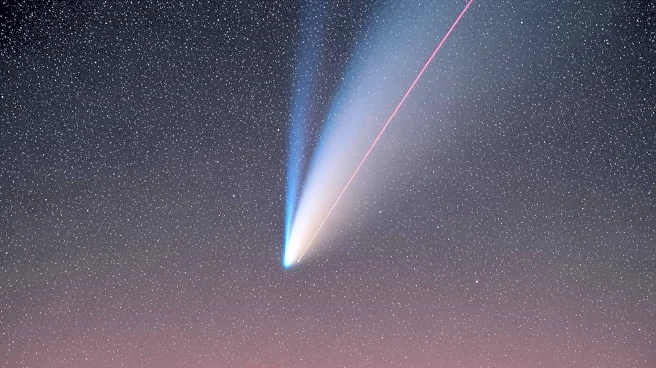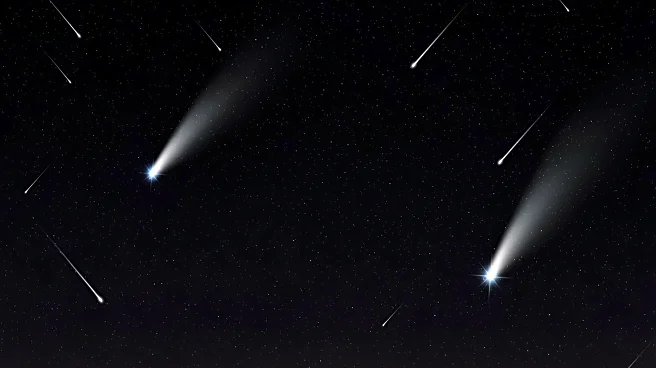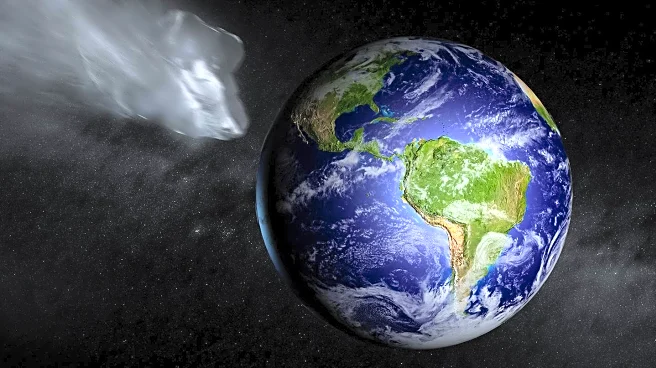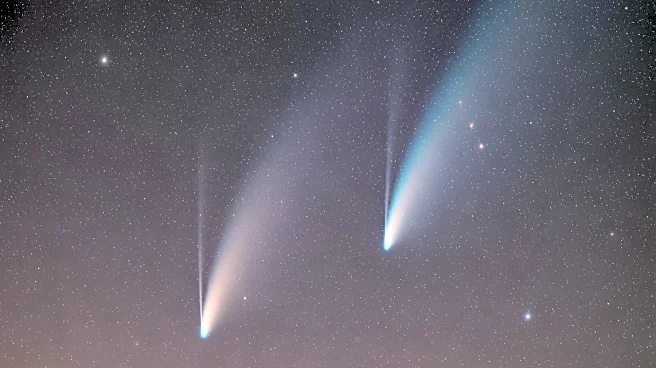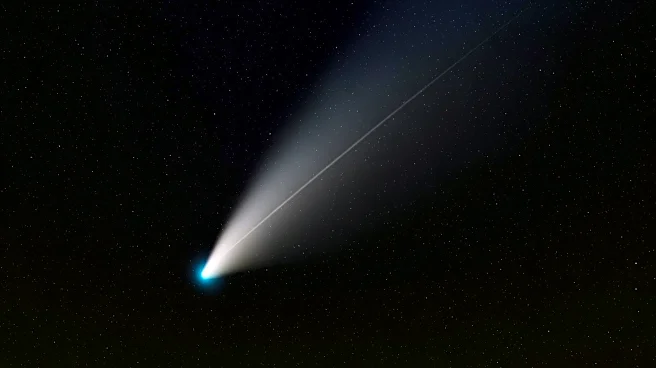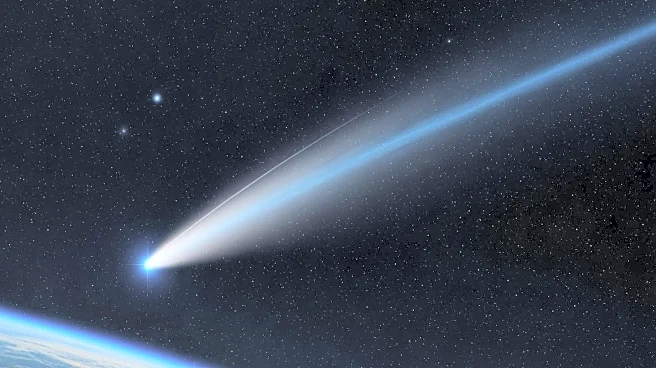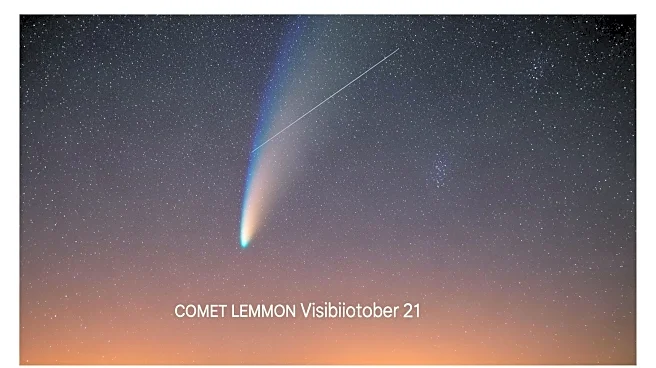What's Happening?
Comet Lemmon, officially known as Comet C/2025 A6, is making its closest approach to Earth, offering a rare chance for stargazers to observe it. Discovered in January 2025, the comet will not return for another
1,300 years. The Royal Astronomical Society (RAS) notes that the comet may be visible to the naked eye under ideal conditions, though binoculars are recommended for a clearer view. The comet's nucleus is relatively small, estimated to be a few miles in diameter. Stargazers are advised to look for the comet in the southwest sky after sunset, above the star Arcturus.
Why It's Important?
The appearance of Comet Lemmon provides a unique opportunity for scientific observation and public engagement with astronomy. Such events can inspire interest in space science and education, highlighting the importance of astronomical research. The comet's visibility coincides with the Orionids meteor shower, offering a rich experience for enthusiasts and professionals alike. Observing celestial events like Comet Lemmon can enhance understanding of cometary behavior and contribute to ongoing research in planetary science.
What's Next?
As Comet Lemmon continues its journey, astronomers will monitor its trajectory and characteristics, contributing valuable data to the field of cometary science. The public is encouraged to take advantage of this opportunity to engage with astronomy, potentially sparking interest in scientific careers. The RAS and other scientific organizations may use this event to promote educational initiatives and public outreach programs, fostering a greater appreciation for space exploration.
Beyond the Headlines
The visibility of Comet Lemmon underscores the importance of preserving dark skies free from light pollution, which is crucial for astronomical observations. The event also highlights the role of comets in understanding the solar system's history and evolution. As remnants from the early solar system, comets like Lemmon provide insights into the primordial materials that formed planets and other celestial bodies.
